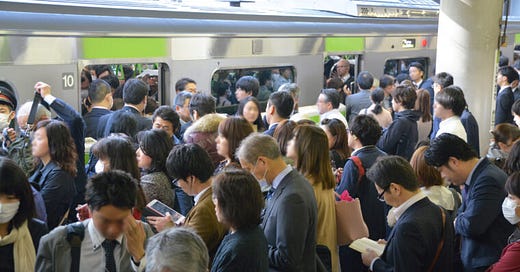Navigating Work Culture: Japan, the U.S., and Europe Through the Lens of a Backend Software Engineer
Insights from a Software Engineer on Global Work Practices and Their Impact
Work Culture Differences: Japan vs. America vs. Europe
Having worked as a software engineer in Japan, the U.S., and Europe, I’ve experienced firsthand how work culture varies across these regions. Each place has its strengths, quirks, and inefficiencies. In this blog, I’ll break down some of the most striking contrasts I’ve noticed.
Workaholism: A Shared Trait?
A common stereotype is that Japanese workers are the ultimate workaholics. When I moved to Europe, many people asked if it’s true that Japanese employees work like robots. The reality is complex.
Many Japanese workers rely on overtime pay to increase their earnings. There’s also a cultural perception that working late is a sign of dedication, though this mindset is gradually changing. Some employees even feel obligated to work overtime.
However, the U.S. is not far behind in terms of work hours. In my experience, colleagues—especially in high-performance environments like Amazon—responded to emails within 5 minutes even at midnight or 6 AM. The American workplace is highly results-driven, demanding both long hours and high-quality output. Unlike Japan’s seniority-based employment system, American companies expect employees to be immediately productive and document their work meticulously due to frequent turnover.
In contrast, Europe has a more relaxed approach to working hours. Most employees work from 9 AM to 6 PM with minimal overtime. If you start early, you finish early. European employees also take more extended vacations than their Japanese and American counterparts. Work-life balance is a priority, and people make time for exercise, family, and leisure activities.
Japan’s culture of overworking can be traced back to the post-war era when rebuilding the economy was the top priority. Working long hours was seen as a virtue. However, "karoshi" (death from overwork) has become a serious issue, to the extent that the term is recognized internationally. This has led to discussions on improving labor conditions in Japan.
Deadlines and Project Delivery
Deadlines are treated very differently across these regions. In the U.S., deadlines are strict, and high quality is non-negotiable. If a deadline is set, missing it is rarely acceptable.
In Japan, while deadlines are important, they can be extended for valid reasons. If there’s a minor mistake, it’s common to delay a deadline to ensure everything is perfect.
Europe, on the other hand, has a more flexible approach. Since employees don’t work overtime, tight deadlines are less common. Long vacations also impact project timelines, making them more accommodating.
Decision-Making and Adaptability
The U.S. and Europe are generally open to change and new tools. If something isn’t working, they quickly adopt alternatives. Flexibility is key.
Japan, however, tends to stick to established rules and familiar systems. Companies often continue using outdated software, like Java 8, simply because transitioning to a new system is perceived as risky or unnecessary. This reluctance to adopt change can hinder innovation.
Workplace Relationships and Personal Sharing
Americans and Europeans are much more open about their personal lives compared to Japanese professionals. Conversations about weekends, vacations, and family life are common in U.S. and European offices. In contrast, Japanese employees rarely discuss their personal lives with their bosses or senior colleagues, unless during informal after-work gatherings.
One cultural difference that surprised me in Europe was the tradition of bringing cake to the office on one’s birthday. Initially, it felt strange to prepare my own celebration, but I came to appreciate the sentiment—it’s a way to express gratitude for another year and share joy with colleagues and friends. It’s a tradition I’d love to see adopted in Japan!
Finding a Balance: The European Middle Ground
Now that I work in Europe, I see how it balances work culture elements from Japan and the U.S. European workplaces prioritize work-life balance while maintaining structured project planning. Deadlines aren’t as aggressive as in the U.S., but they are still respected. There’s a healthy level of social transparency—more than in Japan but less than in the U.S.
Conclusion
Each work culture has its pros and cons. Japan values meticulousness, America prioritizes speed and efficiency, and Europe emphasizes balance. Understanding these differences can help anyone navigate the global workforce more effectively.
What’s your experience working in different work cultures? Let’s discuss in the comments below!




